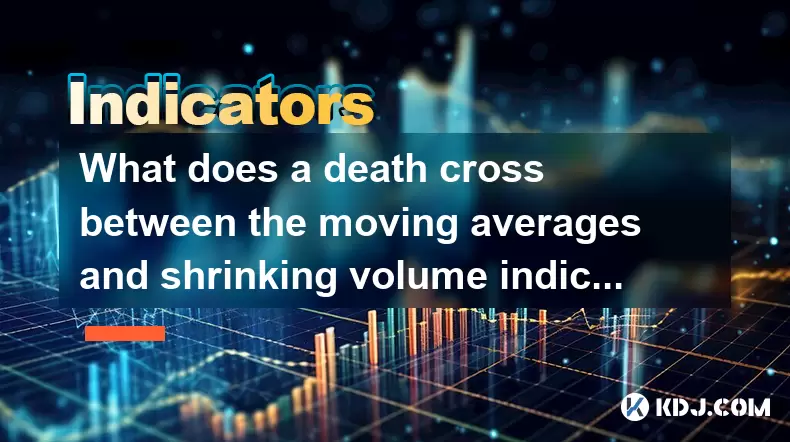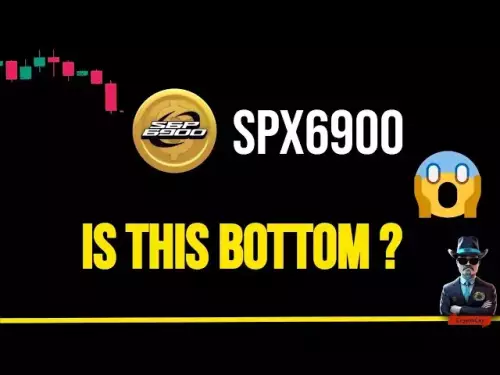-
 Bitcoin
Bitcoin $113100
-1.74% -
 Ethereum
Ethereum $4800
1.16% -
 XRP
XRP $3.041
0.36% -
 Tether USDt
Tether USDt $0.9999
0.02% -
 BNB
BNB $876.6
-0.40% -
 Solana
Solana $205.1
0.96% -
 USDC
USDC $0.0000
0.00% -
 Dogecoin
Dogecoin $0.2345
-0.10% -
 TRON
TRON $0.3629
0.40% -
 Cardano
Cardano $0.9260
1.91% -
 Chainlink
Chainlink $26.20
0.28% -
 Hyperliquid
Hyperliquid $46.04
2.89% -
 Sui
Sui $3.722
0.22% -
 Stellar
Stellar $0.4113
-0.53% -
 Ethena USDe
Ethena USDe $1.000
0.03% -
 Bitcoin Cash
Bitcoin Cash $590.3
0.39% -
 Avalanche
Avalanche $25.82
-0.01% -
 Hedera
Hedera $0.2504
-0.92% -
 Litecoin
Litecoin $119.1
-1.33% -
 UNUS SED LEO
UNUS SED LEO $9.598
0.03% -
 Toncoin
Toncoin $3.315
-1.69% -
 Shiba Inu
Shiba Inu $0.00001308
-1.02% -
 Uniswap
Uniswap $11.06
-2.10% -
 Polkadot
Polkadot $4.149
-1.10% -
 Dai
Dai $1.000
0.03% -
 Aave
Aave $350.7
-1.07% -
 Cronos
Cronos $0.1587
0.97% -
 Bitget Token
Bitget Token $4.664
-0.71% -
 Monero
Monero $274.5
3.42% -
 Ethena
Ethena $0.7021
-4.70%
What does a death cross between the moving averages and shrinking volume indicate?
A death cross in crypto, where the 50-day MA falls below the 200-day MA, signals potential bearish momentum—especially concerning when paired with high volume, but less reliable if volume is shrinking.
Aug 10, 2025 at 01:49 pm

Understanding the Death Cross in Cryptocurrency Markets
The death cross is a technical analysis pattern observed when a short-term moving average crosses below a long-term moving average, typically the 50-day moving average crossing beneath the 200-day moving average. This formation is widely interpreted as a bearish signal, suggesting that the market sentiment may be shifting from bullish to bearish. In the context of cryptocurrency trading, where volatility is high and trends can reverse rapidly, the death cross is closely monitored by traders and analysts. The significance of this pattern increases when it occurs after a prolonged uptrend, indicating that momentum may be weakening. However, the death cross should not be interpreted in isolation. When combined with other indicators, such as volume trends, it can offer deeper insight into potential market reversals.
The Role of Moving Averages in Identifying Trends
Moving averages smooth out price data over a specified period, helping traders identify the direction of the trend. The 50-day moving average reflects recent price action, while the 200-day moving average provides a longer-term perspective. When the 50-day MA falls below the 200-day MA, it suggests that recent prices are declining relative to historical averages. This crossover is not just a statistical event; it often triggers psychological reactions among traders. Many algorithmic trading systems are programmed to respond to such crossovers, which can amplify selling pressure. In cryptocurrency markets, where sentiment plays a major role, the appearance of a death cross can lead to increased short positions and reduced buying interest. The reliability of this signal depends on confirmation from other technical indicators, particularly volume.
Interpreting Shrinking Volume During a Death Cross
Volume is a critical component in validating technical patterns. Shrinking volume during a death cross introduces ambiguity into the signal. Normally, a strong bearish signal is confirmed by rising volume, indicating active selling and broad market participation. However, when volume is decreasing as the death cross forms, it may suggest a lack of conviction among sellers. This could mean that the downward move is not driven by aggressive market participants but rather by passive selling or a reduction in buying pressure. In crypto markets, low volume during a death cross might indicate that the trend reversal is not yet fully established. Traders should be cautious, as such a scenario could precede either a continuation of the downtrend with renewed volume or a potential reversal if buying interest returns.
Combining Death Cross and Volume Analysis: A Practical Example
To analyze a death cross with shrinking volume, follow these steps using a cryptocurrency charting platform like TradingView or Binance:
- Open a daily chart for the cryptocurrency of interest, such as Bitcoin (BTC) or Ethereum (ETH).
- Apply the 50-day simple moving average (SMA) and the 200-day SMA to the price chart.
- Observe whether the 50-day SMA has crossed below the 200-day SMA, confirming the death cross.
- Add a volume indicator below the price chart to monitor trading activity.
- Look for a consistent decline in volume bars over the past 10 to 15 days leading up to and during the crossover.
- Compare the current volume levels to the average volume over the previous 30 days. If current volume is below the 30-day average, it confirms shrinking volume.
- Check for any news or macroeconomic events that might explain low participation, such as regulatory announcements or market holidays.
This process allows traders to assess whether the death cross is supported by strong market activity or if it lacks confirmation due to weak volume.
Implications for Traders and Risk Management
When a death cross appears alongside shrinking volume, traders must consider multiple scenarios. The bearish crossover suggests a potential downtrend, but low volume weakens the reliability of this signal. Some traders may choose to reduce long positions or set tighter stop-loss orders to protect against downside risk. Others may wait for volume to increase before initiating short positions, as rising volume on down days would confirm selling pressure. It is also possible that the market is entering a consolidation phase, where price moves sideways before the next major trend emerges. In such cases, placing trades based solely on the death cross could lead to premature entries. Risk management strategies, such as position sizing and diversification across assets, become crucial during uncertain technical setups.
Historical Context in Cryptocurrency Markets
Past occurrences of the death cross in major cryptocurrencies provide useful context. For example, in early 2022, Bitcoin experienced a death cross as its price declined from its November 2021 peak. Volume during that period was inconsistent—initially high, then shrinking in the following weeks. Despite the bearish signal, the market continued to decline over the next several months, showing that even with fluctuating volume, the death cross can mark the beginning of a prolonged bear market. In contrast, during mid-2019, a death cross formed in Ethereum, but volume was low, and the price rebounded within weeks. These examples illustrate that while the death cross is a significant pattern, its outcome depends heavily on volume and broader market conditions.
Frequently Asked Questions
Can a death cross occur on timeframes shorter than daily?
Yes, a death cross can appear on intraday charts such as 4-hour or 1-hour timeframes, using shorter moving averages like the 50-period and 200-period. However, these signals are less reliable than those on daily or weekly charts due to increased noise and volatility in shorter intervals.
Does a death cross always lead to a bear market?
No, a death cross does not guarantee a bear market. While it is a bearish indicator, false signals can occur, especially in ranging markets or during periods of low volume. Confirmation from price action and volume is essential before drawing conclusions.
How can I differentiate between a death cross and a golden cross?
A death cross occurs when the 50-day MA crosses below the 200-day MA, signaling bearish momentum. A golden cross happens when the 50-day MA crosses above the 200-day MA, indicating bullish momentum. The visual distinction lies in the direction of the crossover.
Is the death cross relevant for altcoins?
Yes, the death cross applies to altcoins, but due to lower liquidity and higher volatility, the signal may be less reliable. Traders should use additional confirmation tools, such as RSI or MACD, when analyzing smaller-cap cryptocurrencies.
Disclaimer:info@kdj.com
The information provided is not trading advice. kdj.com does not assume any responsibility for any investments made based on the information provided in this article. Cryptocurrencies are highly volatile and it is highly recommended that you invest with caution after thorough research!
If you believe that the content used on this website infringes your copyright, please contact us immediately (info@kdj.com) and we will delete it promptly.
- Ripple's RLUSD and Japan's Regulation: A Match Made in Digital Finance Heaven
- 2025-08-25 07:05:29
- BlockDAG's $381M Presale: Meet the Core Team Driving Its Success
- 2025-08-25 07:25:14
- Solana Price Targets $270: On-Chain Strength Fuels Bullish Momentum
- 2025-08-25 07:25:14
- Ozak AI, Binance, and Coinbase: Navigating the Crypto Landscape in 2025
- 2025-08-25 05:05:13
- Coinbase, Hacker, and Solana: Decoding the $8M Heist
- 2025-08-25 05:30:12
- Riding the Altcoin Wave: Momentum, Tech, and Wall Street's Embrace
- 2025-08-25 06:05:21
Related knowledge

What does it mean when the +DI and -DI cross frequently in the DMI indicator but the ADX is flattening?
Aug 11,2025 at 03:15am
Understanding the DMI Indicator ComponentsThe Directional Movement Index (DMI) is a technical analysis tool composed of three lines: the +DI (Positive...

What does the sudden appearance of a "dark cloud cover" candlestick pattern during an uptrend indicate?
Aug 13,2025 at 11:35am
Understanding the 'Dark Cloud Cover' Candlestick PatternThe dark cloud cover is a bearish reversal pattern in technical analysis that typically appear...

What does it mean when the moving average, MACD, and RSI all send buy signals simultaneously?
Aug 11,2025 at 01:42pm
Understanding the Convergence of Technical IndicatorsWhen the moving average, MACD, and RSI all generate buy signals at the same time, traders interpr...

What does it mean when both the KDJ indicator and the RSI show overbought signals simultaneously?
Aug 13,2025 at 11:35am
Understanding the KDJ Indicator in Cryptocurrency TradingThe KDJ indicator is a momentum oscillator derived from the Stochastic Oscillator, widely use...

What does it mean when the price is trading above the SAR indicator but the red dots are densely packed?
Aug 09,2025 at 11:49pm
Understanding the SAR Indicator and Its Visual SignalsThe SAR (Parabolic Stop and Reverse) indicator is a technical analysis tool used primarily to de...

What does it mean when the candlestick chart forms a "Morning Star" but trading volume is sluggish?
Aug 12,2025 at 06:28pm
Understanding the Morning Star Candlestick PatternThe Morning Star is a three-candle bullish reversal pattern commonly observed in cryptocurrency pric...

What does it mean when the +DI and -DI cross frequently in the DMI indicator but the ADX is flattening?
Aug 11,2025 at 03:15am
Understanding the DMI Indicator ComponentsThe Directional Movement Index (DMI) is a technical analysis tool composed of three lines: the +DI (Positive...

What does the sudden appearance of a "dark cloud cover" candlestick pattern during an uptrend indicate?
Aug 13,2025 at 11:35am
Understanding the 'Dark Cloud Cover' Candlestick PatternThe dark cloud cover is a bearish reversal pattern in technical analysis that typically appear...

What does it mean when the moving average, MACD, and RSI all send buy signals simultaneously?
Aug 11,2025 at 01:42pm
Understanding the Convergence of Technical IndicatorsWhen the moving average, MACD, and RSI all generate buy signals at the same time, traders interpr...

What does it mean when both the KDJ indicator and the RSI show overbought signals simultaneously?
Aug 13,2025 at 11:35am
Understanding the KDJ Indicator in Cryptocurrency TradingThe KDJ indicator is a momentum oscillator derived from the Stochastic Oscillator, widely use...

What does it mean when the price is trading above the SAR indicator but the red dots are densely packed?
Aug 09,2025 at 11:49pm
Understanding the SAR Indicator and Its Visual SignalsThe SAR (Parabolic Stop and Reverse) indicator is a technical analysis tool used primarily to de...

What does it mean when the candlestick chart forms a "Morning Star" but trading volume is sluggish?
Aug 12,2025 at 06:28pm
Understanding the Morning Star Candlestick PatternThe Morning Star is a three-candle bullish reversal pattern commonly observed in cryptocurrency pric...
See all articles

























































































